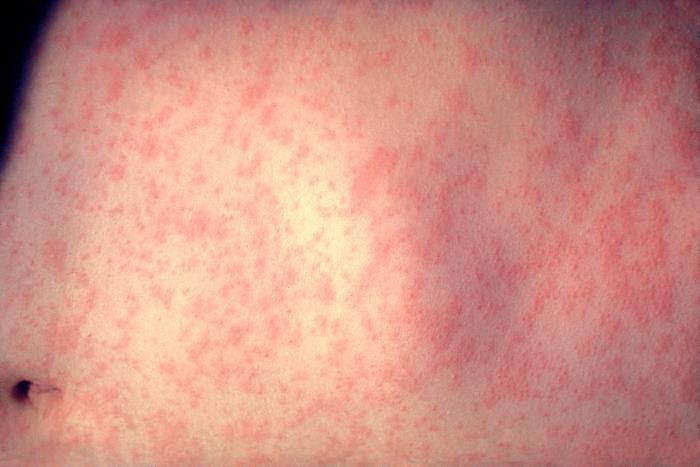Measles vaccination gaps have stalled efforts to further reduce the burden of the disease, but early results from animal tests suggest that health departments may someday have an oral drug to help knock down outbreaks.
The encouraging findings come at a time when health officials in many countries scramble to extinguish outbreaks, most recently in the Fraser Valley of British Columbia, California, New York City, and even a cruise ship in Europe.
The team tested the new drug, a small-molecule RNA polymerase inhibitor known as ERDRP-0519, in ferrets exposed to a lethal challenge with canine distemper virus (CDV), another morbillivirus that is closely related to measles. Led by researchers from Georgia State University (GSU), the international group of scientists published their findings today in the latest online edition of Science Translational Medicine.
Richard Plemper, PhD, one of the authors of the study, said at a media briefing yesterday that over the past decades, deaths from measles dropped in number but have plateaued at around 150,000 per year since about 2007 because of vaccine coverage gaps—access problems in the developing world and parental suspicions about vaccines in developed nations. He is a professor in the Center for Inflammation, Immunity, and Infection at GSU.
He emphasized that the drug, if it proceeds smoothly through further animal and human trials, isn't intended as a replacement for the vaccine but rather as a tool that can dovetail with measles vaccination programs. The group envisions that the shelf-stable drug could be stockpiled and used to stem measles outbreaks in settings where vaccination rates fall below critical thresholds.
Global control of measles must center on high vaccination coverage, Plemper said. "We were developing here an additional regimen against the virus that, combined [with immunization], should help us win the endgame of eradication."
During measles infections, the rash typically develops after the body's immune response has cleared most of the virus, so the drug would best be used in nonvaccinated social contacts of confirmed cases during the 2-week period before clinical signs develop, he said.
Since there is no good animal model for testing measles virus infection, Plemper said researchers test the compound against the closely related CDV, which causes a highly lethal measles-like disease in ferrets. Ferrets that received the novel drug by mouth after intranasal exposure to the virus survived infection, showed no clinical signs of disease, and mounted an immune response that protected them against experimental reinfection with CDV.
To test resistance, the group generated resistant viruses; they found that ferrets infected with those versions had benign disease or transmitted the viruses far less efficiently than they transmitted the drug-sensitive viruses, he said. "These data indicate that should resistance emerge in the field, the resistant viruses will likely be clinically insignificant."
The next step in testing the drug will likely involve monkeys. If results of those trials were promising, investigations would progress to safety studies in humans and additional clinical trials. Plemper said even if there are no study bottlenecks, a drug approved for use in humans is still years away.
It isn't clear how costly the drug would be, he said, but he added that the novel compound is one the pharmaceutical industry can produce with established facilities and at a competitive price.
Veronika von Messling, DVM, with the Paul-Ehrlich-Institut in Langen, Germany, who is one of the study coauthors, told reporters that the study results have also prompted researchers to discuss if it would be useful to develop the drug for treating CDV in animals.
Krumm SA, Yan D, Hovingh ES, et al. An orally available, small-molecule polymerase inhibitor shows efficacy against a lethal morbillivirus infection in a large animal model. Sci Transl Med 2014 Apr 16;6(232):[Abstract]
See also:
Apr 16 GSU press release





















